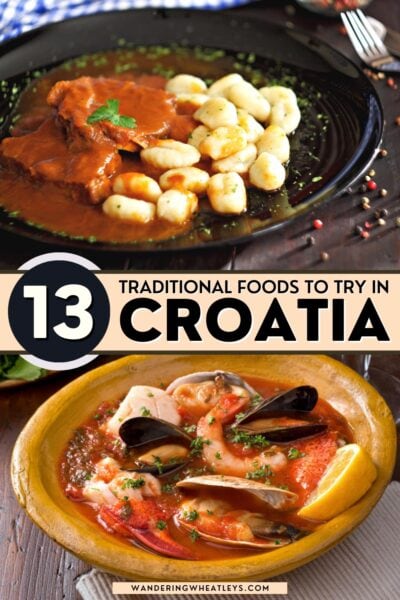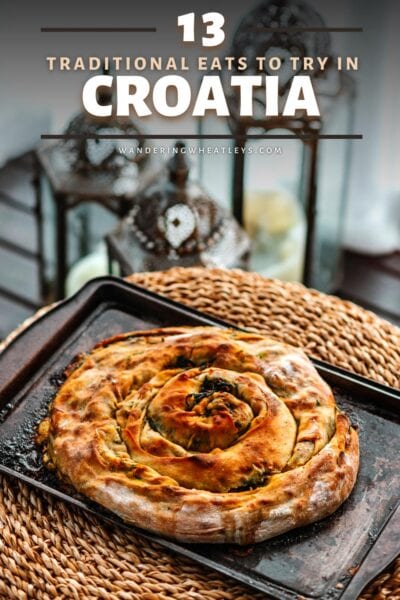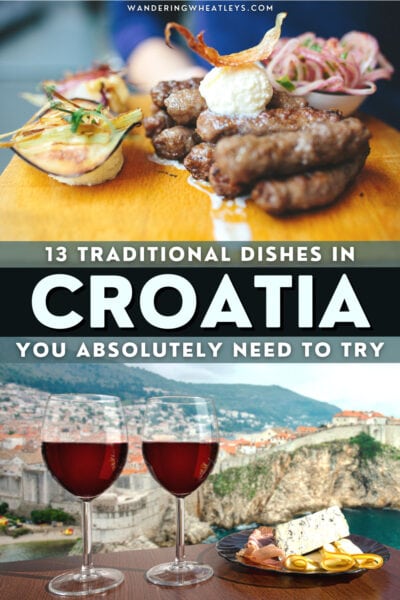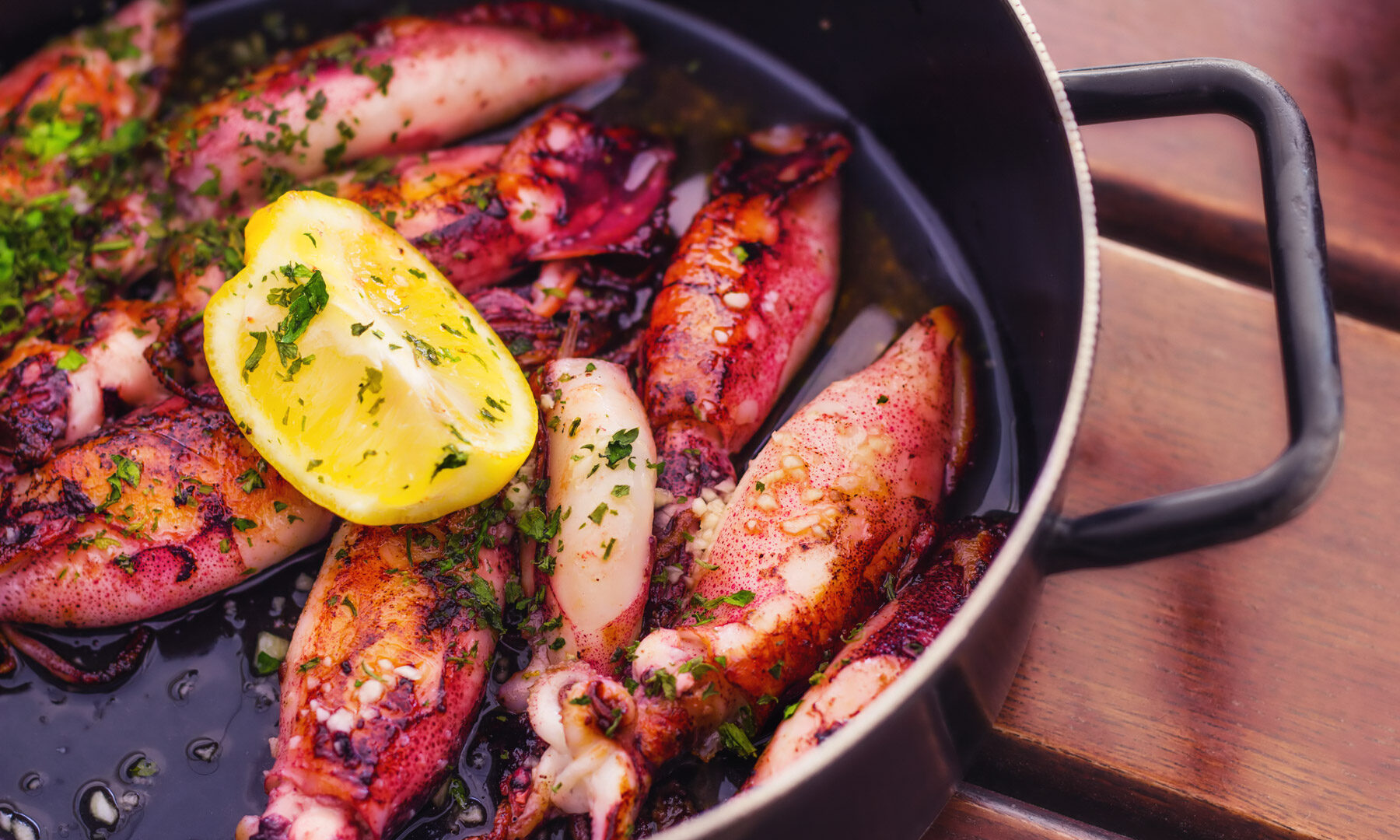The smell of freshly salted sardines carries on Mediterranean winds as you enjoy a glass of Croatia’s finest Plavac Mali wine in an Old Town harbor on the Dalmatian coast. Chefs are busy slow cooking braised beef pašticada, while a fish stew simmers away in an iron hot pot buried under hot coals.
Croatian food is a bountiful blur of Mediterranean, Balkan, and Central European cuisines, and you’re going to love every bite and morsel of meat, fish, and vegetables that you dig into during your trip. Traditional Croatian food reflects the country’s location at the crossroads of nations, and you’ll find a delectable variety of dishes ranging from Ottoman-inspired ćevapčići to Italian-influenced pasta and gnocchi.
There are high-end restaurants and Michelin-starred chefs cooking up gourmet Croatian cuisine in tourist hotspots like Dubrovnik and Split, while in the villages and on the islands, you’ll quickly fall for the local taverna culture (known as konobas) where fresh home-cooked food is always on the menu.
With so many things to eat and drink, you might not know what to choose from the menu. That’s why we decided to compile our list of traditional Croatian foods for you. Give these delicious Croatian dishes a try, and there’s no doubt you’ll have an incredible time eating your way around Croatia!
Disclaimer: This post may contain affiliate links. If you make a purchase or booking through one of our links we may earn a small commission (don’t worry, it’s at no extra cost to you).
13 Traditional Croatian Dishes to Try (and Where to Try Them!)
1. Take a Big Bite of a Burek

One of the most popular traditional Croatian dishes is the burek, a cheese-filled pastry that’s dripping in grease but guaranteed to leave you feeling full. The humble burek is best described as a staple, and you’ll become very used to starting your day with a hearty slice of this delicious pie-like dish when you’re traveling around Croatia.
Bureks are prepared with a thick casing of filo pastry, which flakes and crumbles beautifully when it’s been baked to perfection. In between the pastry, you’ll find a juicy selection of fillings. Cheese is the most common, but almost as popular are spinach or meat fillings. You’ll recognize a burek from the smell of the pastry, and you’ll be able to purchase them from bakeries and supermarkets all across the country.
They’re all prepared slightly differently, though, and we aren’t just talking about the recipes but the shape of the burek. You might see square or rectangular bureks; circular, pie-like shapes are also common, while the spiral burek really is a masterpiece of baking.
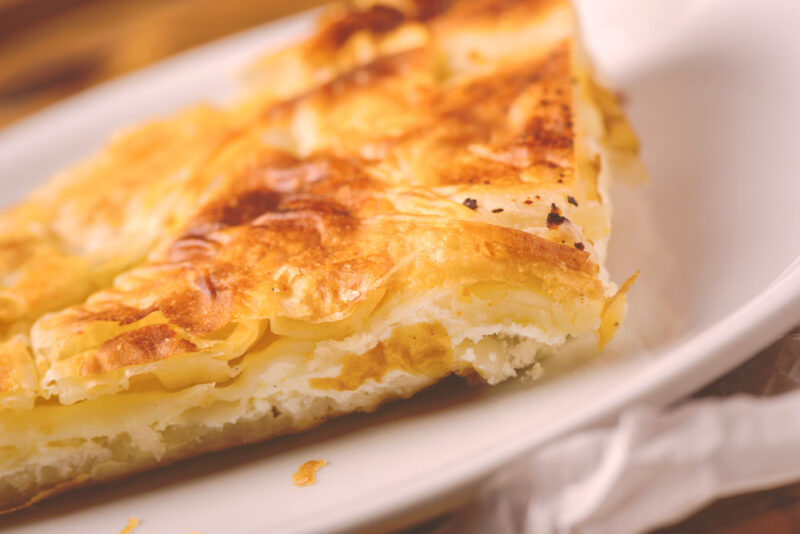
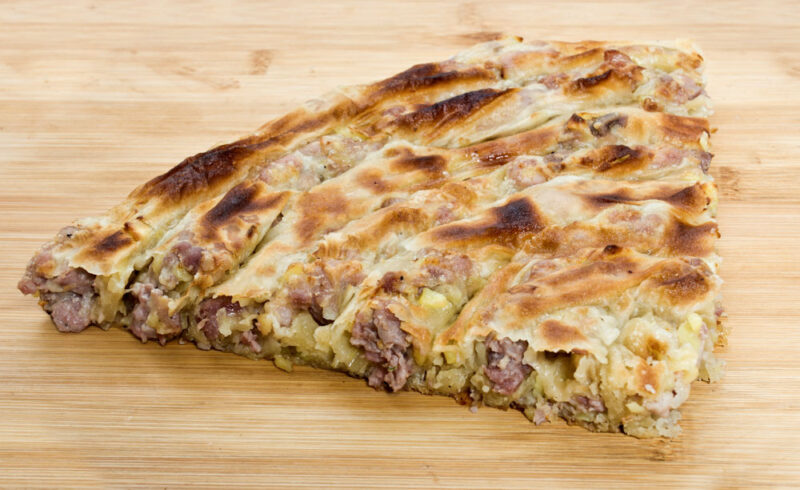
The origins of the burek are just as interesting as the shapes and fillings you’ll discover. The story goes back to the days of the Ottoman Empire when Croatia was invaded and occupied. The Ottomans brought bureks with them to the Balkans, where they stayed, and today, you can enjoy this savory treat from Zagreb to Istanbul.
The burek is a popular breakfast item, but as a savory pastry, it’s a highly versatile type of food. You can eat it for lunch, dinner, or just as a snack, and they’re excellent if you’re in a hurry or need to pack a hearty takeaway for a long hike or a long-distance bus ride. You can find bureks everywhere (we’re not exaggerating), but one popular country-wide bakery chain that always serves quality pies is Bas Burek.
2. Learn How to Stew a Seafood Buzara
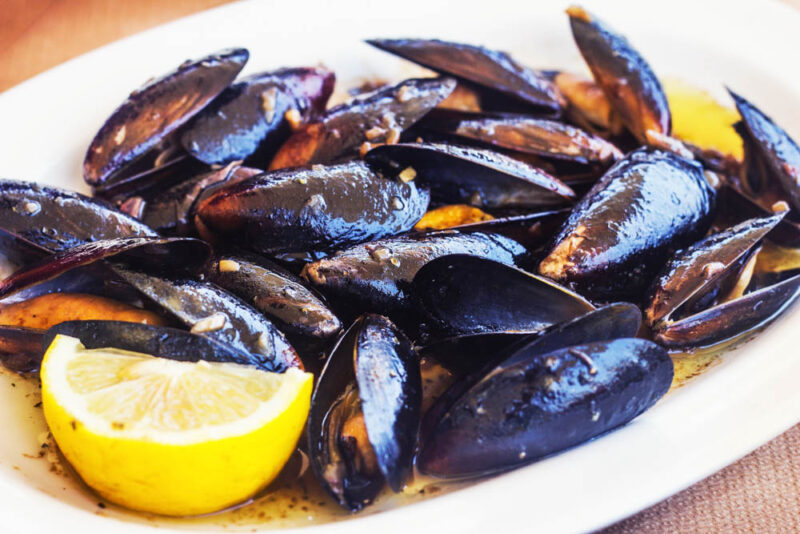
Croatia’s Adriatic coastline is beautiful, but as much as we love the turquoise waters and rugged islands, it’s the cooking that really gets us excited. Along the coast, you’ll find restaurants preparing a delectable seafood stew named buzara, which seafood fans will quickly develop a serious appetite for.
Buzara isn’t a dish as much as it is a way of cooking or preparing seafood. The word buzara is thought to have been derived from the name of the large pots Mediterranean fishermen would use to stew their catch and the endless debates between Italians and Croatians as to which side of the Adriatic developed the technique first.
First, select your seafood, with mussels, prawns, crabs, or scampi being some of the most popular options. Next, you need to stew the seafood in a sauce of olive oil, wine, parsley, garlic, and breadcrumbs. You also need to decide if you’d like a red or white buzara.
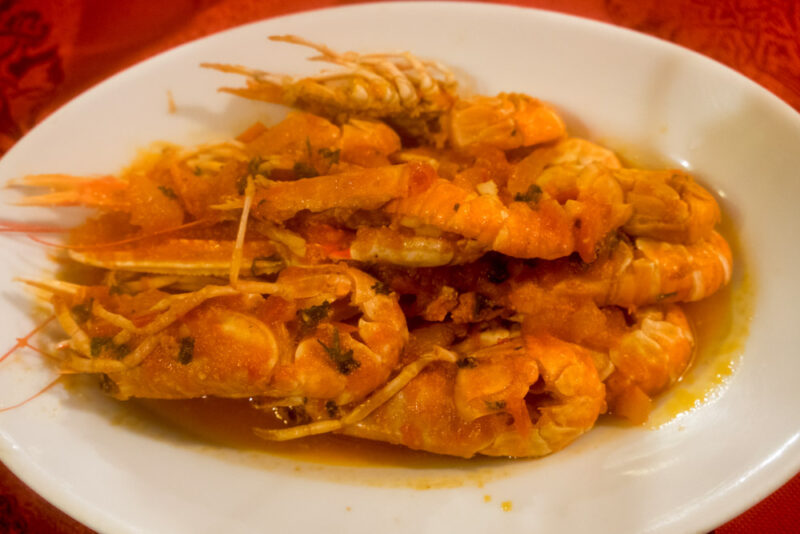
White buzara is the recipe outlined above, with white wine being the first choice. Red buzara is prepared with the addition of fresh tomatoes or tomato puree, which gives the finished dish a thicker texture and a hearty red color. Of course, you can make red buzara even more distinctive (and much redder) by pouring a healthy serving of red wine on the side and into the stew.
The Adriatic is the spiritual home of buzara, and you’ll find excellent places to try it in destinations like Split and Dubrovnik. In Split, we recommend visiting Villa Spiza in the Old Town, and in Dubrovnik, we suggest Konoba Bonaca.
3. Enjoy a Medley of Seafood and Spices with Brudet
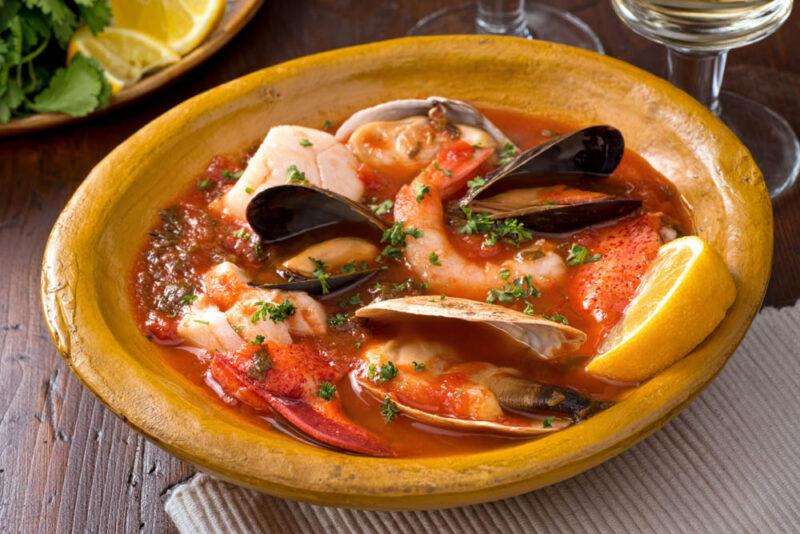
A simple, typical Croatian food you’ll find along the coast is named brudet, and it’s a delicious medley of seafood and vegetables stewed in wine and spices.
Brudet is a one-pot meal, and like buzara, you’ll find variations of this dish all across the Adriatic Sea. Italians also claim it as their own, as do Montenegrins and Croatians. In Croatia, the dish is a mouthwatering Adriatic specialty, and it’s best when prepared with multiple types of seafood.
The seafood itself varies from region to region and catch to catch. Whatever’s available can be thrown into the pot, and it’s not uncommon to find brudet prepared with a mix of fish and shellfish (some chefs will tell you that three different types of fish are the minimum required for a brudet). To this seafood delight are added seasonal vegetables, while the sauce is prepared using olive oil, garlic, parsley, onions, tomatoes, vinegar, and wine.
Leave everything to slowly stew in the pot, giving you a thick sauce that’s perfect for mopping up with polenta or bread. Kvarner, Dalmatia, and Istria are all well-known for their brudet. In Rijeka, a port city overlooking Kvarner Bay, you’ll find excellent brudet at Konoba Tarsa, a local tavern serving up hearty stews.
4. Savor the Salty, Smokey Taste of Pršut
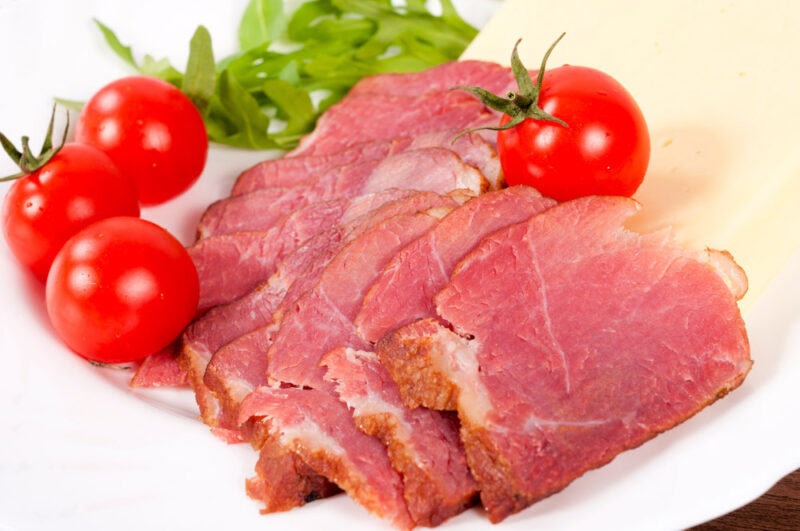
Croatians love their cured meats, but none has quite so much allure as the salty cuts of dried ham known simply as pršut. This Croatian delicacy takes weeks to properly prepare and cure, but the results are absolutely worth the wait. You’ll soon be figuring out ways to ship entire legs of pršut home as you near the end of your vacation.
Pršut is very similar to Italian prosciutto. Pork thighs are heavily salted, then left to dry in the salty sea wind that whips down the Croatian coastline. Pršut might be further pressed with heavy weights to remove excess moisture, and it’s often smoked over wood-burning fires to add a uniquely smoky tang to the finished product.
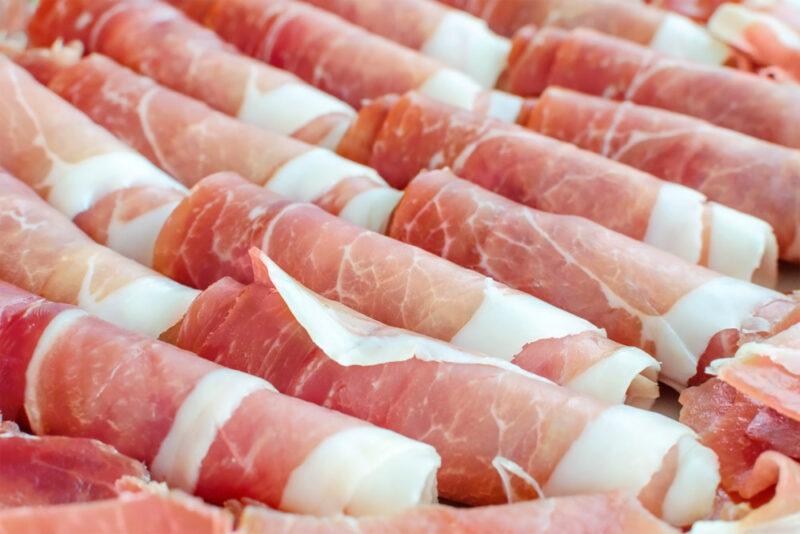
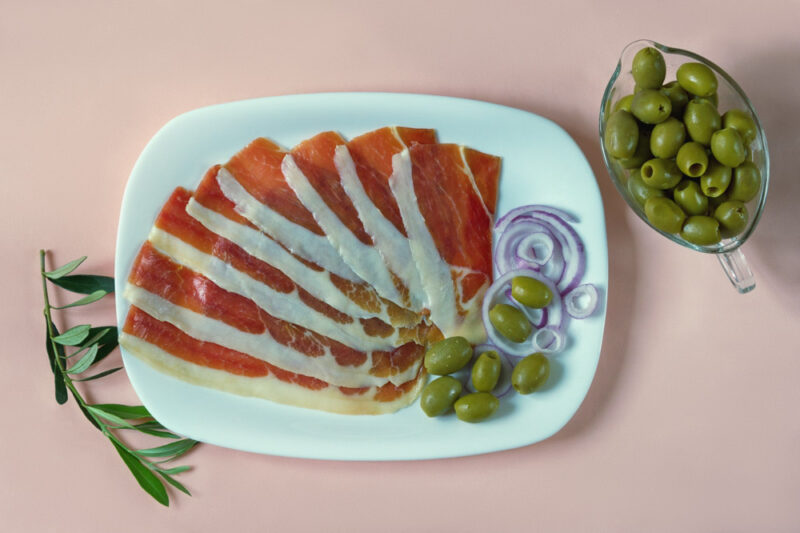
Different regions have preferred methods of preparation. In Istria, for example, pršut is typically dried by the sea (smoking is rare), while Dalmatians focus on smoking their pršut. When ready (some producers might cure pršut for as long as a year), the pršut is sliced super thin, then served alongside olives, cheese, or melon. For the best Istrian-style pršut, head to Kod Milana Estate near Pula.
5. Get Festive with Croatian Fritule
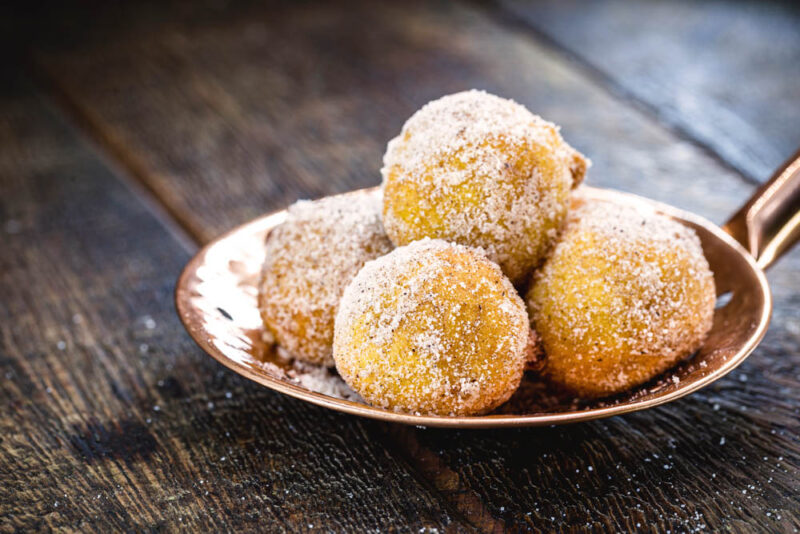
As soon as the festive season begins, you’ll smell the sweet scent of fried doughnuts wafting through Croatian streets. That sweet scent is fritule, and when you smell it, you know it’s Christmastime in Croatia.
A fritule is a small doughnut-like pastry typically served with powdered sugar or icing sugar after being deep-fried in oil. They’re deep-fried quickly, leaving them super crispy on the outside but lovely and soft when you bite into the middle.

Traditionally, fritule are prepared during Advent, when Croatians are counting down the days before Christmas begins. Basic fritule are made using a pancake-like mixture, but every region has its own recipe. You might find fritule made with raisins or lemon zest or with dough that’s doused in rum before being fried.
These traditional recipes are often expanded upon with the addition of delightful extras such as chocolate sauce, caramel, or ice cream, making them an excellent choice of dessert in the run-up to Christmas. You’ll find them at Christmas markets all over the country, but we recommend traveling to Zagreb, the capital, where you can sample the best fritule in Croatia.
6. Brave Crni Rižot, Croatia’s Famous Black Risotto
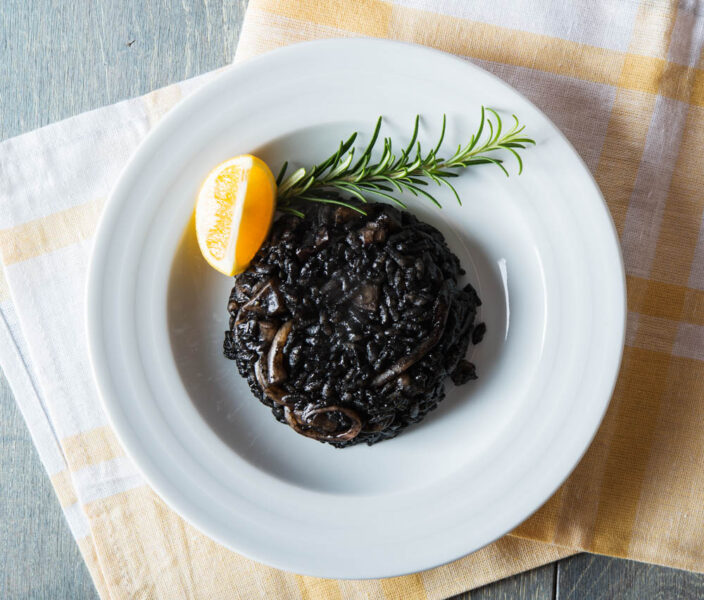
One of Croatia’s most distinctive dishes is crni rižot, the nation’s famous black risotto. This is one of our favorite things to eat in Croatia, not least because of its unusual color.
Crni rižot is a jet-black risotto that’s best prepared using fresh seafood straight from the harbors of the Adriatic Sea. You’ll need risotto rice, garlic, onions, parsley, and olive oil, while the unique darkness of the dish comes from sacks of squid ink pivotal to its preparation.
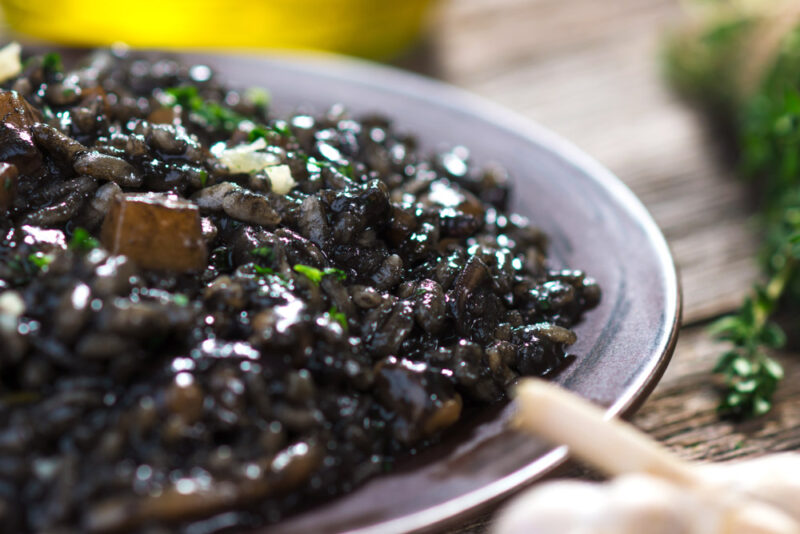
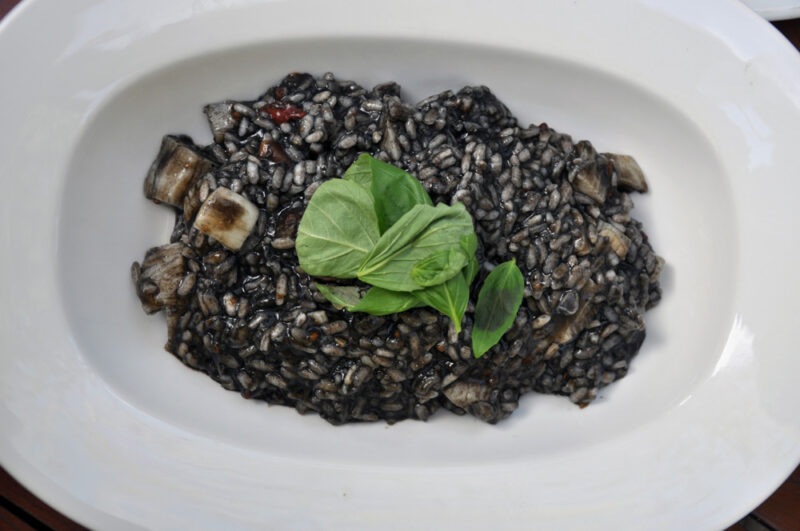
Chefs will remove the sacks directly from the squid, the tentacles and body of which are then sliced up and also used in the cooking process. The risotto rice is slow-cooked in a mixture of fish stock, white wine, and squid ink, leaving you with a delectable main course that’s best enjoyed with a glass of white Croatian wine.
Of course, the best crni rižot is always found along Croatia’s coastline. It’s popular from north to south, and you can find it everywhere from Rijeka down to Dubrovnik. Try the crni rižot at Orhan, a restaurant located in Dubrovnik, or if you’re in Split, try Konoba Fetivi.
7. Treat Yourself to a Mouthwatering Ćevapčići
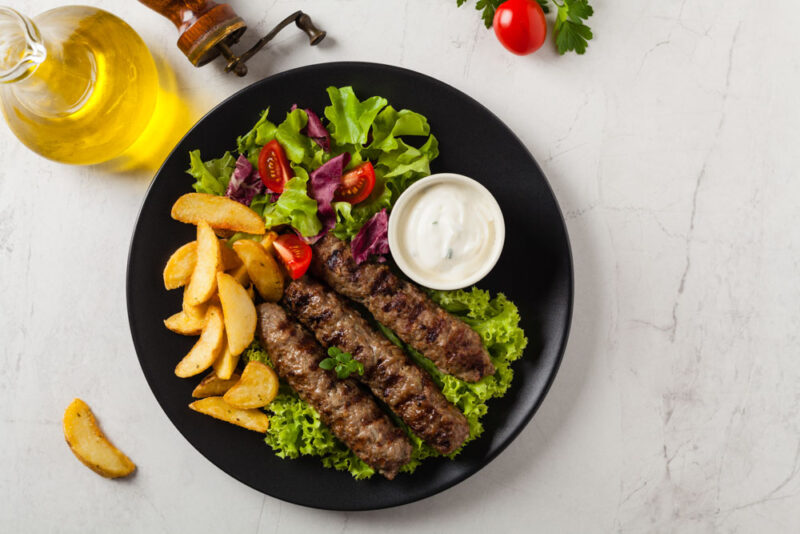
Ćevapčići (or cevapi) is one of the most widespread dishes in the Balkans. Like the burek, this is a dish that was popularized during the Ottoman era and has now become a regional staple.
Ćevapčići is a meat-heavy dish consisting of minced meat seasoned with salt and spices. It’s then molded into a kebab or sausage-like shape around a skewer. The meat varies but is often beef, pork, veal, or a mix.
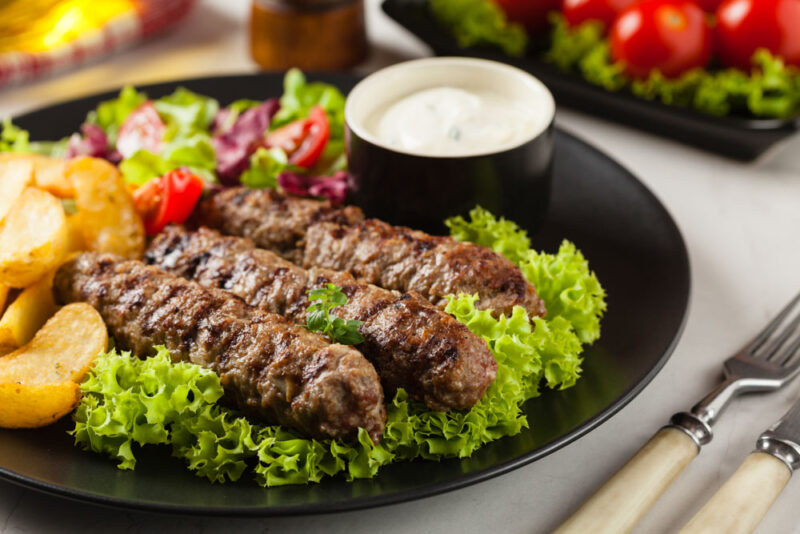

The best ćevapčići is grilled over hot coals and served dripping with grease. Once the meat is cooked, it’s usually served with thick slices of flatbread, or it could be dished up as a part of a meat platter with rice and salad on the side. It’s always accompanied by a hot paprika sauce named ajvar.
As it is for Serbians, Bosnians, Montenegrins, and North Macedonians, ćevapčići is a big deal for Croatians. That means you’ll find ćevapčići being cooked up all over the country, and it’s a favorite for takeaways. Travel to Zagreb for excellent ćevapčići, where you can try local favorites like PLAC Kitchen & Grill or MS Grill.
8. Wait Patiently for Pašticada
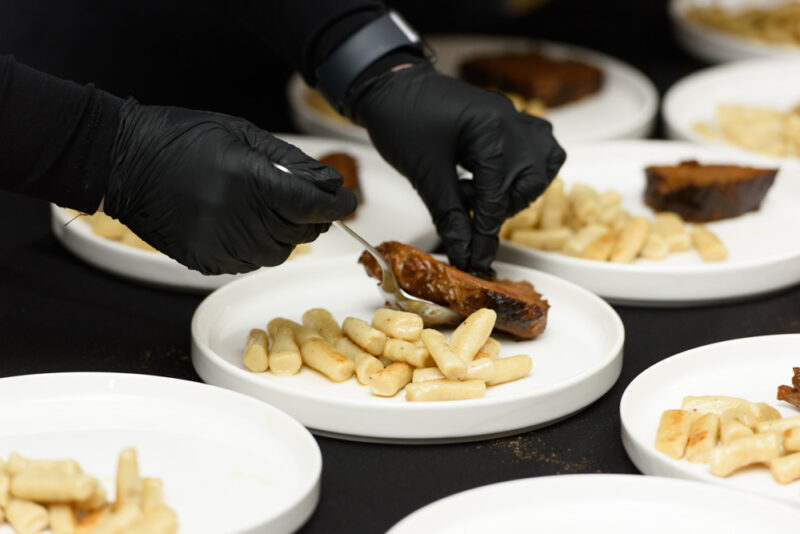
If you love beef, then look no further than pašticada, a saucy beef dish that takes hours to properly prepare.
Pašticada is the ultimate Croatian beef stew. The dish calls for an entire round of beef, which is first stuffed to bursting with an assortment of herbs that give the stew its deep flavor. This includes onions, parsley, garlic, and cloves.
The beef is sliced open to insert the herbs, after which liberal quantities of bacon are also added for good measure. The beef is then left to marinate for hours (overnight, if possible) in a mixture of oil and vinegar.
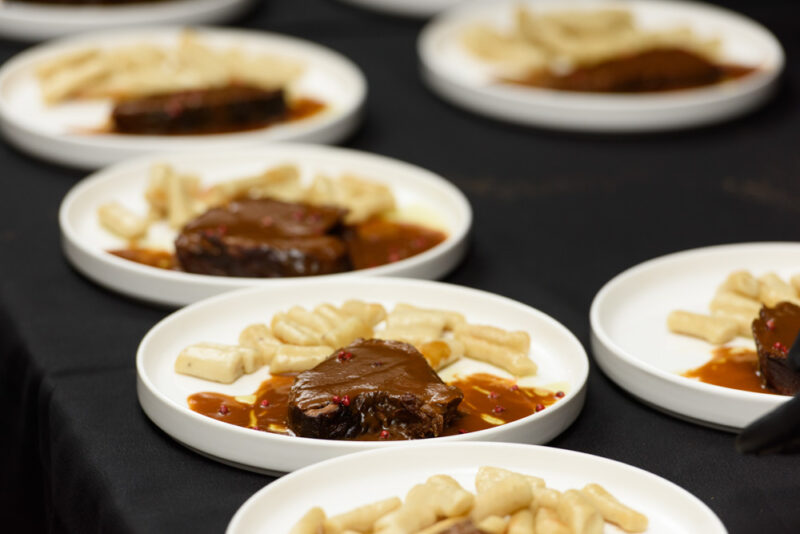
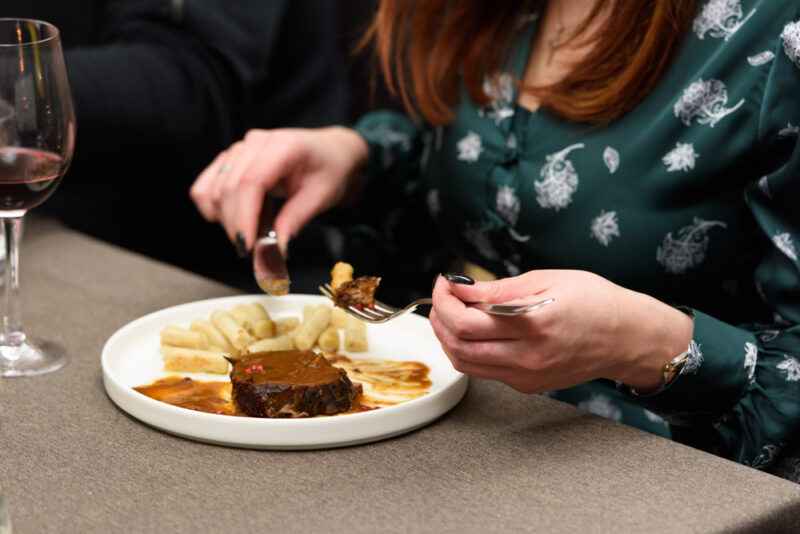
Once the beef has soaked up all that marinade and flavor, it’s first braised in a pan alongside any other vegetables (like carrots and onions) that are also going to make their way into the stew. The next step is to soak the beef and vegetables in a red wine sauce, and from there, you slowly stew the ingredients until they’re beautifully tender.
Chefs might add other ingredients to the stew at this point, too, including figs, bay leaves, and other herbs and spices. The pašticada is then served with a juicy covering of sauce alongside a traditional side of gnocchi.
Pašticada is said to have originated in Dalmatia, where the oldest recipe found to date was discovered in Dubrovnik. That’s the place to order it, and we suggest visiting Konoba Veranda by Dubrovnik’s seafront.
9. Cook a One-Pot Ispod Peke Under Hot Coals
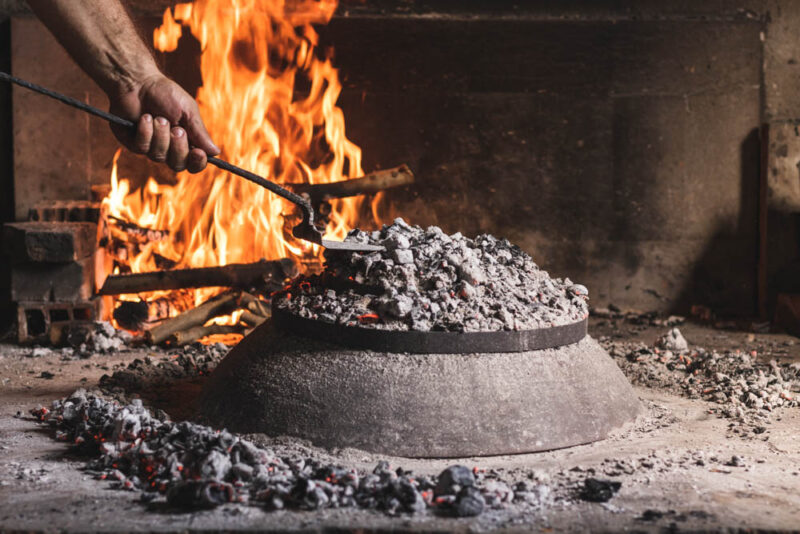
Ispod peke (also called ispod cripjne) is a traditional Croatian food that’s thought to date back centuries. Specifically, ispod peke is really a style of cooking, as the name translates into English as “cooking under the lid.”
The “lid” in reference is a cast iron cooking pot that’s filled with meat, fish, or vegetables before being buried beneath hot coals that envelop the dish with heat. The one-pot meal is then left to slowly cook in the coals until the ingredients inside are stewed to perfection. It’s an ancient cooking process – one that’s thought to have been used in Croatia since Roman times.
To start, you’ll need your cast iron pot and an open fire pit or large oven for heating coals. Next, you choose from fish (octopus is popular) or meat (veal is an excellent choice) and throw them into the pot, which will already be lined with chopped potatoes, carrots, onion, and garlic. Pour in olive oil, add bay leaves and rosemary, and top up the stew with a nice serving of white wine. Cover the pot, and bury it in the coals to cook.
Some of the best ispod peke is found in Split, Dubrovnik, and on the Croatian islands, where octopus and other seafood are a favorite ingredient. In Split, try Konoba Varos for authentic ispod peke.
10. Head to Slavonia for Spicy Fiš Paprikaš
Croatian cuisine tends to be focused on the coastline, where there’s an abundance of fresh seafood, but don’t ignore the delectable offerings inland, where you can also find delicious fish-based dishes.
In the historical region of Slavonia in northeast Croatia, one such specialty is fiš paprikaš. As you’ll be far from the coast, this dish makes use of freshwater fish from the region’s rivers, including the likes of catfish and perch.
Fiš paprikaš is best described as a spicy fish stew. You’ll need onions, white wine, garlic, and lots of spicy paprika to make the broth, in which your freshwater fish is stewed until tender. You can stew the fiš paprikaš in an oven, where it’s often cooked alongside potatoes and other vegetables. It’s also common for the fiš paprikaš to be served with noodles and, of course, a glass of wine to take the edge off the spice.
Make your way to Slavonia for the best fiš paprikaš. In Osijek, the regional capital, we recommend visiting the riverside restaurant Kod Javora.
11. Try Istrian Raw Fish, Croatia’s Take on Sushi
If you believe that the Japanese are the only nation to savor the delights of raw fish, then you’d be wrong. Istrians have been preparing a type of raw fish for generations, and in Novigrad-Cittanova, the delicacy is best enjoyed at a restaurant named Damir & Ornella.
The preparation of Istrian raw fish is an art that goes back centuries, although, we’ll be clear, it’s very different from Japanese sushi. Damir & Ornella are the masters of “Istrian sashimi,” and you’ll love how they serve their raw fish delicacies with skill, flair, and simple flavor.
Their menu is a fine example of the art of Istrian raw fish, and the restaurant is the best place to get a taste of local specialties, including raw Kvarner shrimp. The shrimp are served fresh from the Adriatic Sea with a side of melon and a drizzle of olive oil.
Of course, they go down particularly well with a glass of white wine. The classic dish is raw fish served with olive oil and a portion of black truffles, then topped with some tasty polenta to finish. Again, it’s best enjoyed with a glass of white wine from a local Istrian winery.
They also serve scallops in a buttery sauce, white scallops mixed with pepper, fresh crabs with balsamic vinegar, and Istrian favorites like pasta and gnocchi (served with seafood, of course). Then you can finish off your meal with homemade ice cream served with a drizzle of olive oil (yes, it is unique!).
12. Snack on Salty Croatian Sardines
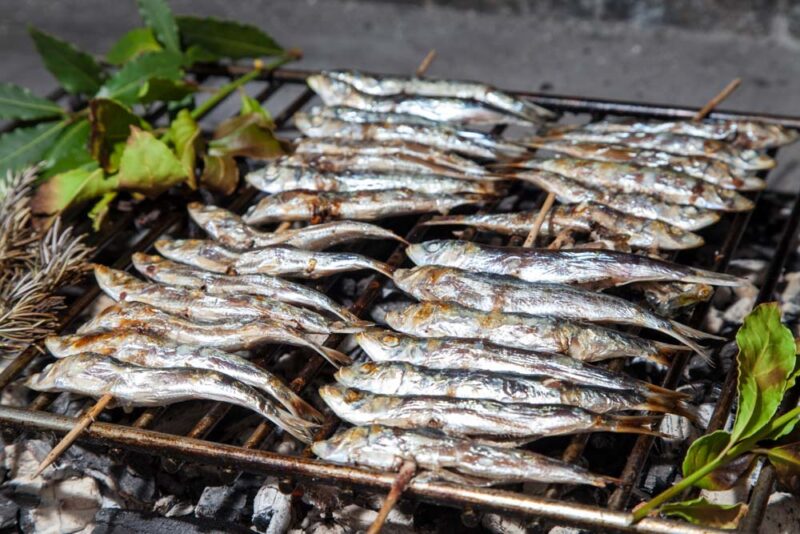
One of the most popular types of Croatian seafood is the humble sardine, which you’ll find is a highly prized catch along the country’s long coastline.
Croatian sardines are dripping in fatty acids, oils, and Omega-3, and they’re consumed by the netload for their health-imbibing qualities and their salty taste. There are innumerable ways for Croatian sardines to be prepared, and each tavern and restaurant has its own cooking styles and seasonings. They can be grilled over hot coals, barbecued outdoors, or baked to perfection in the oven.
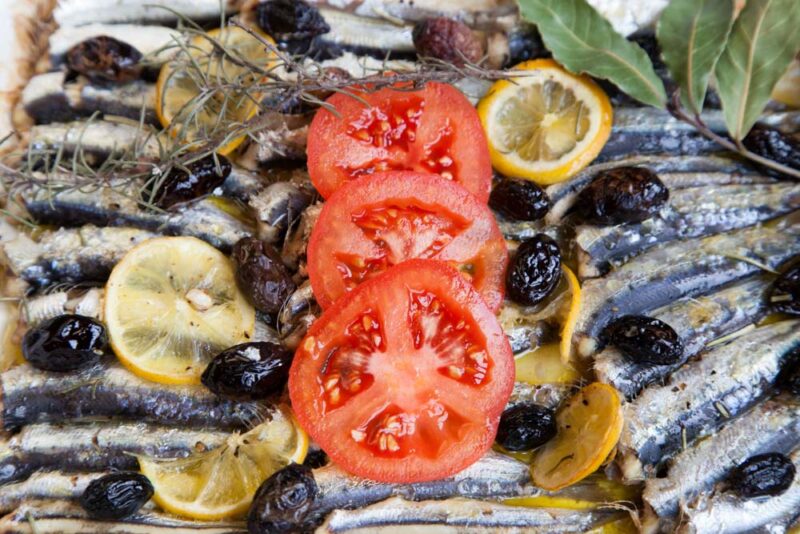
One specific sardine delicacy that’s enjoyed in Croatia is the slane srdele, which is historically only prepared during the summer months. Freshly caught sardines are smothered in salt and then packed tightly into barrels.
More salt is added until the sardines are covered, and the barrels are then left, pressed down by weights, for at least three months. It’s a way to save the sardines caught in summer for winter, and the salty preserved fish is a true delight. You’ll find sardines all along the coast, but the Zardar region is particularly known for its high-quality fish.
13. Enjoy a Glass of Croatian Wine
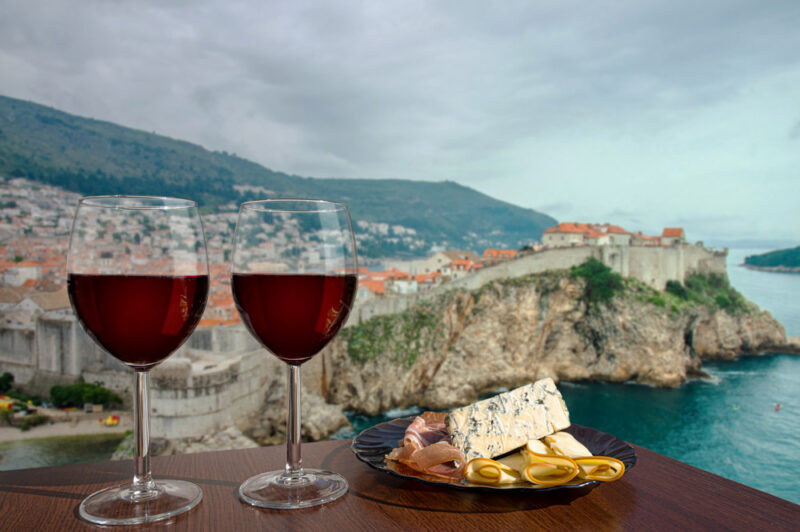
You’ll have ample time to try Croatian wine during your stay in the country, and you’ll quickly fall in love with the nation’s finest vintages. Croatian wine isn’t particularly well-known outside of the country, but trust us when we say the grapes grown here can compete with anywhere else in the Mediterranean. After all, Croatia has a climate and soil that’s been producing excellent wine since the Roman era.
The most popular variety of red wine comes from grapes grown along the Dalmatian coast. Named Plavac Mali, it’s a fruity wine that goes well with a seafood stew. Posip is a type of white wine that was traditionally grown only on the Croatian island of Korcula but has now spread across much of the Croatian islands and to the Dalmatian mainland.
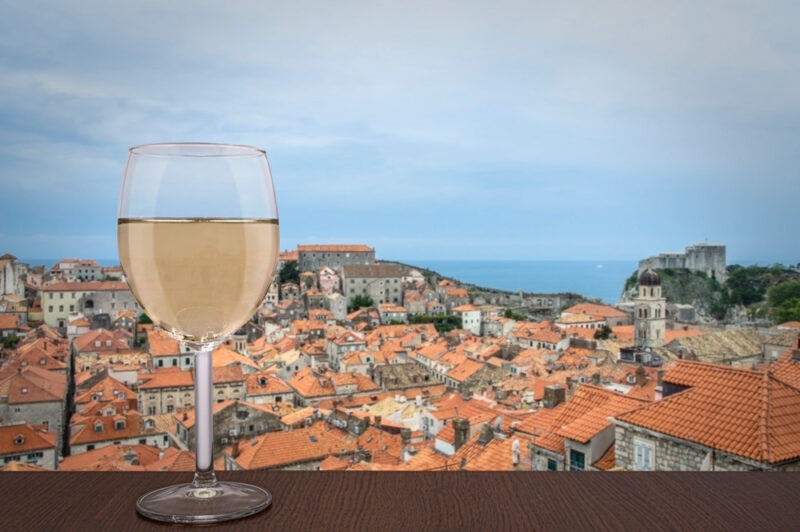
In other areas, there are more wines distinct to Istria, while the upland region of Slavonia produces a unique variety that’s shaped by the higher altitude and inland climate.
There you have it! The 13 best traditional Croatian foods to try on your next trip. What’s your favorite traditional Croatian food?
SHARE THIS ON PINTEREST
